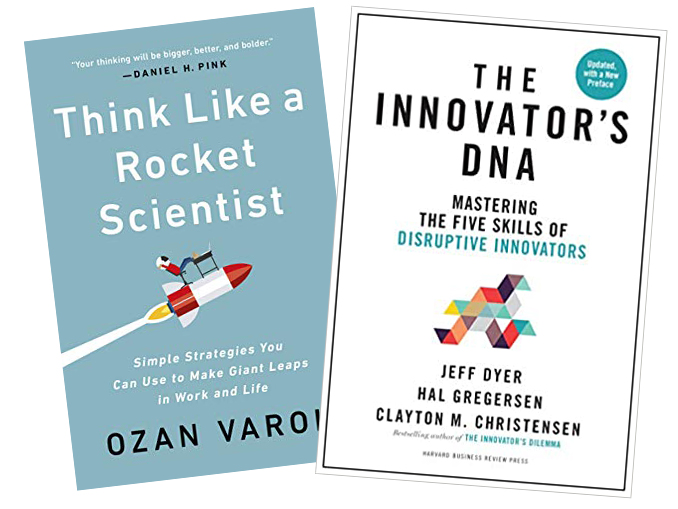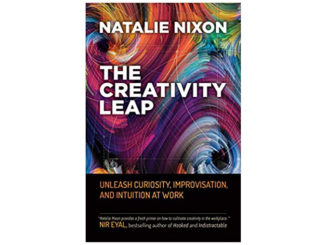Think Like a Rocket Scientist by Ozan Varol, Public Affairs, 2020
The Innovator’s DNA: Mastering the Five Skills of Disruptive Innovators by Jeff Dyer, Hal Gregersen, and Clayton M. Christensen, Harvard Business Review Press, 2019
As a business owner, Think Like a Rocket Scientist and The Innovator’s DNA were inspiring books, particularly in the uncertain times of a pandemic. Both books should have wide appeal as they provide ways to think more creatively about business and life.
Ozan Varol’s Think Like a Rocket Scientist is divided into three parts resembling a rocket exploration process: Launch, Accelerate, and Achieve. It richly combines some science, business, psychology, and even history. Varol is a rocket scientist, an award-winning law professor, and was a member of the operations team for NASA during the Mars Exploration Rover project,
which sent two rovers to explore the red planet.
Varol uses a great analogy between launching a rocket and taking on life or business challenges to help explain how in life and in business we face failures and roadblocks. He further explains how it is important to learn how to turn these barriers into successes by asking the right questions and using the right tools. The book outlines how to thrive during uncertainty and to remember that there is always an exit door if we decide we do not want to be there. We have the power to explore options and ask harder questions based on our findings—and decide to move forward or take a different approach. Varol believes that if we stop from moving forward with an idea because of fear and insecurity, our learning and growth also cease to move forward. Therefore, we grow when we push ourselves to think outside of the box. The author beautifully reveals stories of other successful people, from Albert Einstein to Elon Musk, and how they managed to get through uncertain times and achieve impactful outcomes. One of Varol’s suggestions is to question assumptions, as doing so gives us opportunities to flourish. Think Like a Rocket Scientist offers practical examples that can be implemented right away, such as “fail gracefully,” where you use a smaller group of customers to test a product or service, instead of rolling it out at a bigger scale.
The Innovator’s DNA: Mastering the Five Skills of Disruptive Innovators, by Jeff Dyer, Hal Gregersen, and Clayton M. Christensen, is also full of practical ideas and inspirational stories but takes a different approach from Varol’s book. The Innovator’s DNA is based on interviews with business innovators over a six-year period, including David Neeleman, founder of JetBlue and Azul airlines, and Jeff Bezos, founder of Amazon. The Innovators’ DNA describes the difference between people who just have an idea, but do nothing to implement it, and the innovative entrepreneurs and executives who take an idea and capitalize on it. The book identifies four types of innovators: startup entrepreneurs, corporate entrepreneurs, product innovators, and process innovators. I feel that innovative individuals, overall, may be like market researchers, because they have a system for engaging in questioning, and they observe, network, and experiment with different things. The authors describe how disruptive innovation starts with us, provide numerous examples from well-known innovators across the world, and detail how they pivoted their businesses by asking questions, disrupting the status quo, and more than anything, taking action.
The three authors have written several other books, both together and separately. A common thread is that each writes on innovation and they all are professors—Dyer at Brigham Young University, Gregersen at MIT, and Christensen at Harvard Business School. Throughout Innovator’s DNA, they press on the importance of associating, questioning, observing, networking, and experimenting behaviors that are crucial to generating new ideas. Chapters 2–6 are about discovering these skills and providing examples.
The second part of the book is based on the DNA of disruptive organizations and teams, detailing innovative companies and the people, processes, and philosophies of putting the innovator’s DNA into practice. Readers will feel inspired by the examples provided, as well as the ideas suggested to approach challenges and turn adversities in business or life into triumph.
If you are looking for inspiration to push yourself to take the next step on developing an idea or to challenge yourself with something you have not done before, pick up Think Like A Rocket Scientist and Innovator’s DNA.





Be the first to comment